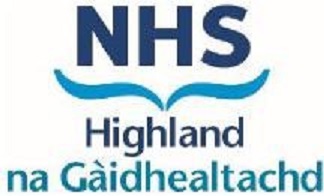COVID-19: Fingers & Toes (Guidelines)

Fingers & Toes, including post-COVID chilblains
Background Information
During the COVID-19 pandemic, there has been emergence of a chilblains-like phenomenon affecting fingers and toes. This is poorly understood and not always associated with positive coronavirus virology (antibodies or blood/respiratory PCR) or other signs of COVID-19. It tends to affect younger people and late in the disease course. Children and young people may present with swollen toes and/or fingers, which may be erythematous, purpuric or violaceous, associated with cutaneous manifestations such as macules, papules, desquamation and ulceration. The lesions may be pruritic or painful.
The majority of children and young people presenting in this way have a benign course and the lesions resolve without intervention within one month.
The differential diagnosis of dactylitis includes infection (cellulitis, osteomyelitis), sickle-cell anaemia, gout, sarcoidosis and spondyloarthropathy e.g. psoriatic arthritis. The presentation with cutaneous lesions may, in a small number of children and young people, represent an underlying systemic connective tissue disease or vasculitic process such as systemic lupus erythematous or cryoglobulinaemia.
In all children and young people presenting with erythematous and/or swollen digits, a full history and systematic examination, including joint assessment, should be carried out.
Please include the following points from the history in the referral letter:
- Joint pain
- Joint swelling
- Colour changes
- Rashes
- Duration of symptoms
- Effect of cold exposure on symptoms
- Features of connective tissue disease e.g. weight loss, fever, oral ulcers, arthritis, abdominal pain, haematuria
- COVID history – patient and family members
- Family history – arthritis, psoriasis, IBD
Please include the following points from the clinical examination in the referral letter:
- Joint restriction, swelling, erythema, heat
- Rashes, livido
- General systematic examination
Suggestions for investigations whilst waiting for outpatient appointment
In the absence of an obvious alternative diagnosis such as cellulitis or injury, the following investigations should be performed:
- Bloods including FBC, PV, U+Es, LFTs, CRP, CTD Screen (please note that we would not expect very young children to have bloods obtained at their GP practice, this can be done on paediatric review)
- Urinalysis
- Vital signs including blood pressure
- Clinical photography if possible, or ask parents to document on their camera phone
- Testing for COVID-19 (via blood or throat/nose swab) is not required unless the patient has other features of COVID-19
Suggestions for management whilst waiting for outpatient appointment
If the patient is systemically unwell, consider admission to hospital under the acute medical team/rheumatology for further investigation and management.
If there are other systemic features such as fever, malaise, joint symptoms or signs (arthralgia, swelling, erythema, heat, restricted movement), widespread rash – discuss with rheumatology.
If the child or young person is otherwise systemically well, give advice to keep the hands and feet warm and covered and avoid cold/damp exposure. Symptomatic management such as simple analgesia and anti-histamine for pruritis should be provided.
If needed, consider a short course of topical steroids, such as:
- Betnovate ointment once nightly for 7-10 days
- Mometasone 0.1% ointment once nightly for 14 nights
- Clobetasol propionate 0.05% ointment twice daily for 7 days
If topical steroids have already been trialled without success, consider a short course of oral prednisolone, 1mg/kg once daily for 7 days.
In the absence of any other concerning features, give worsening advice and advise the patient/carer to seek further review if ongoing symptoms at 6 weeks. At this stage, a referral to paediatric rheumatology is warranted.
Person(s) responsible for information
Dr Stuart Henderson
Consultant Paediatrician, Raigmore Hospital
This document was written by Dr Jaclyn Keightley, Consultant Paediatrician with an interest in Rheumatology, Royal Hospital for Children, Glasgow, with minor local adaptations by Dr Stuart Henderson
Massey PR, Jones KM. Going viral: A brief history of Chilblain-like skin lesions (“COVID toes”) amidst the COVID-19 pandemic. Semin Oncol. 2020 Oct; 47(5): 330–334.
Baeck M, Herman A. COVID toes: where do we stand with the current evidence? Int J Infect Dis. 2021 Jan; 102: 53–55.
Carrascosa JM, Morillas V, Biela I, Munera-Campos M. Cutaneous Manifestations in the Context of SARS-CoV-2 infection (COVID-19). Actas Dermosifiliogr. 2020 Nov; 111(9): 734-742.
Andina D, Noguera-Morel L, Bascuas-Arribas M, Gaitero-Tristan J, Alonso-Cadenas JA, Escalada-Pellitero S, Hernandez-Martin A, de la Torre-Espi M, Colmenero I, Torrerlo A. Chilblains in children in the setting of COVID‐19 pandemic. Pediatr Dermatol. 2020 May;37(3):406-411.
Ladha MA , Luca N , Constantinescu C , Naert K, Ramien ML. Approach to Chilblains During the COVID-19 Pandemic. J Cutan Med Surg. Sep/Oct 2020;24(5):504-517
